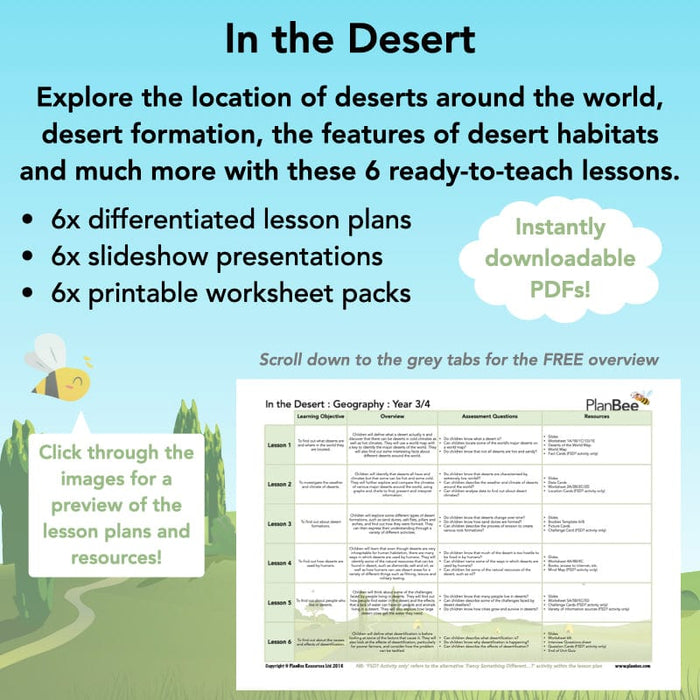Grab your water bottles and set off to the driest places on Earth with this 'In the Desert' KS2 Geography scheme of work for Year 3 and Year 4. Your KS2 class will learn what a desert is and the features of desert habitats. They will discover where the major deserts of the world are, as well exploring the physical and human geography of the desert biome.
With lesson plans, exciting slides, activity ideas, differentiated worksheets, picture cards, graphs, and much more, these KS2 'In the Desert' Geography lessons provide everything you need to teach your class about deserts hot and cold from the Sahara to the Antarctic.






























































































